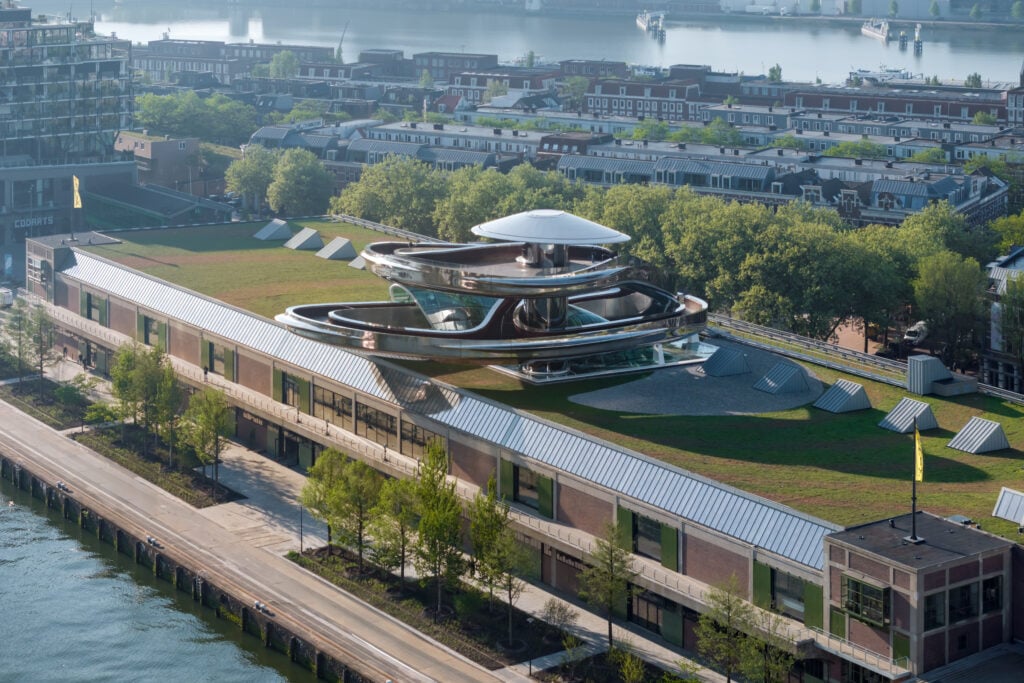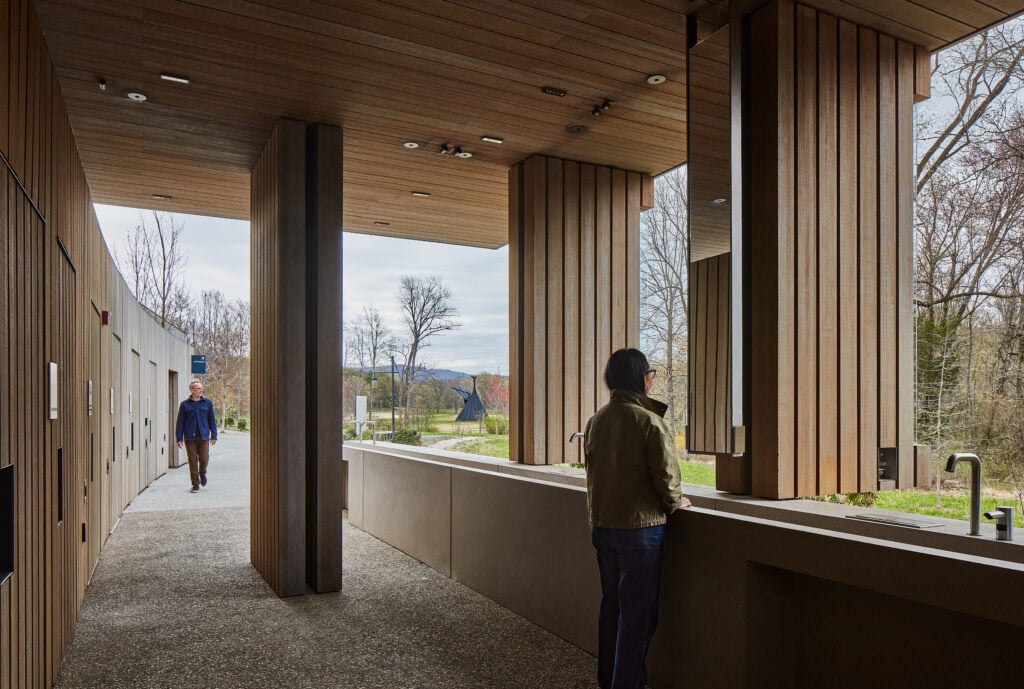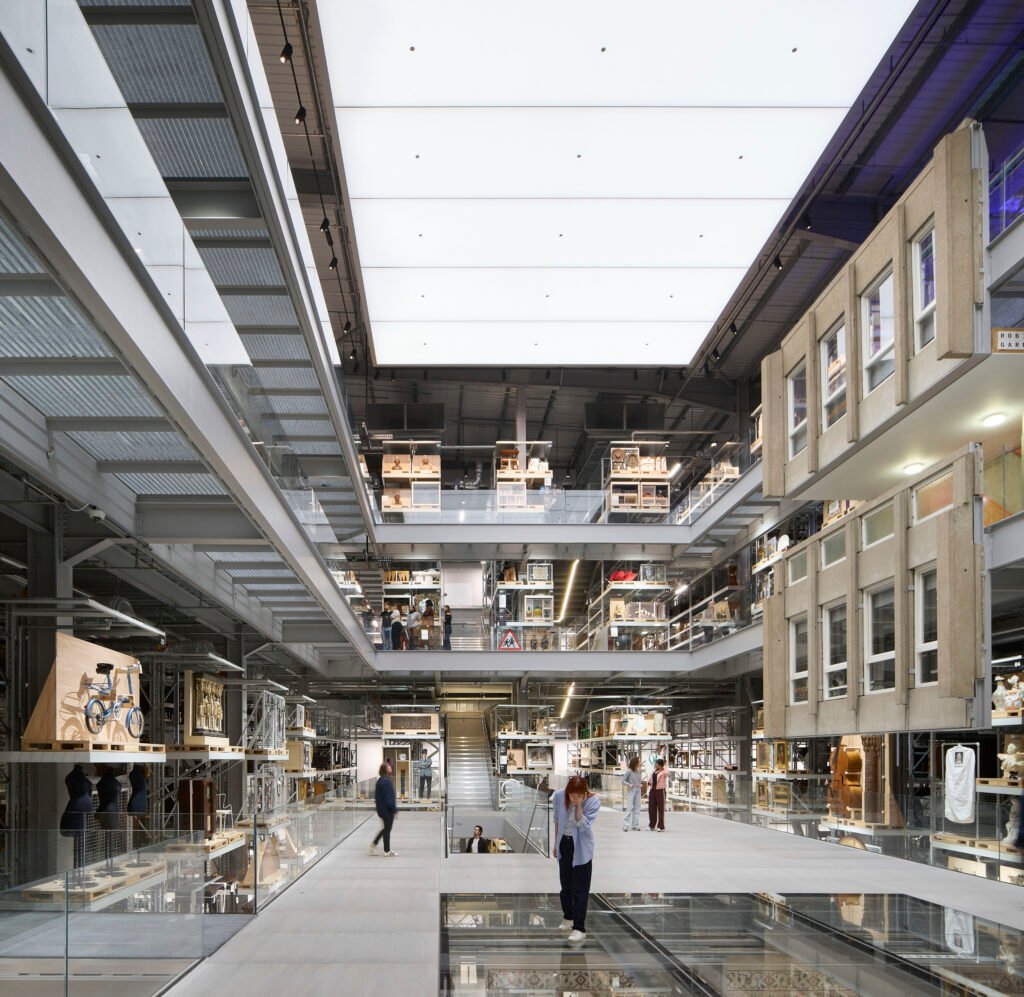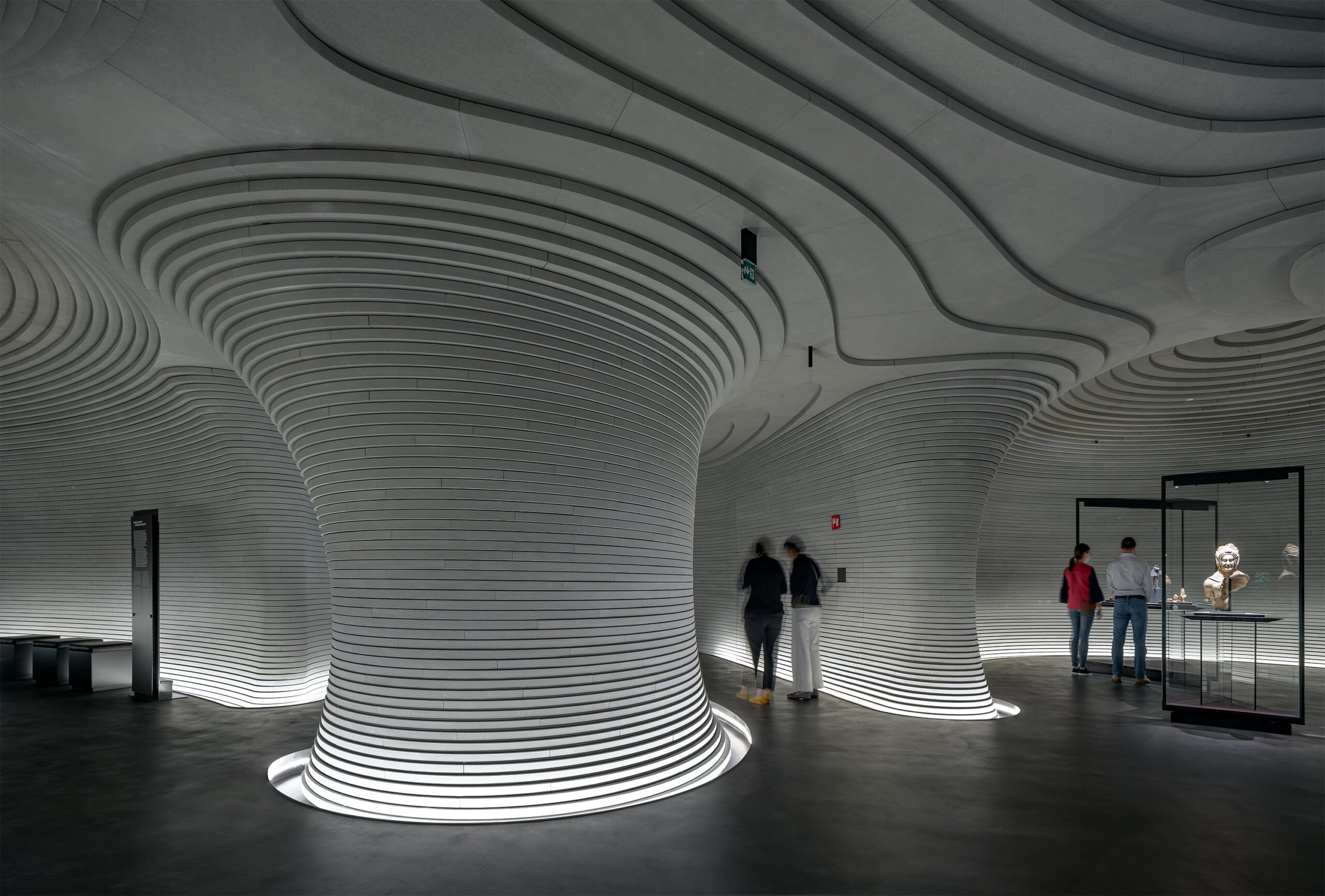
April 17, 2023
Mario Cucinella’s Etruscan Art Museum Dives through the Layers of History
Just across from Milan’s Giardini Indro Montanelli, along the city’s exclusive Corso Venezia, a line of austere 19th-century palaces stands as a testament to the wealth, prestige, and ominous power once held by this city’s aristocracy. The blond and beige Palazzo Bocconi-Rizzoli-Carraro (1871), originally the palace of the Prince of Piombino, is typical of these structures, showcasing classical pediments, regal moldings and boiserie, symmetrical layouts, original French Empire furniture, and a sense of old-world grandeur. Even after you walk inside, it’s hard to believe that this once-abandoned palace has been transformed into one of the world’s great centers of Etruscan art, a civilization that reached its height around 500 B.C. But a recently-completed undertaking, spearheaded by the Foundation Luigi Rovati and Milanese architect Mario Cucinella, somehow takes visitors—simultaneously—into the Etruscan Era, the Age of Empire, and the present day.

A Subterranean Gallery for Etruscan Art
The foundation, named for the late physician, researcher, pharmaceutical entrepreneur, and avid collector of classical art Luigi Rovati, showcases his family’s exceptional collection, which includes more than 2,000 pieces, including jewels, vases, statues, urns, ceramics, and more. Over 250 are presented in what is by far the most dramatic of the architect’s interventions here: the Palazzo’s basement. On the palace’s upper floors, the firm has renovated strikingly opulent spaces and filled them both with contemporary pieces and classical work, side by side. “It’s like a city’s stratification,” explains Cucinella, of the layering of history, which explores life and afterlife, classical and modern, and the dialogue between past and present.
You enter the sparely lit underground spaces via curving stairs made of overlapping and echoing pietra serena, a bluish-grey sandstone extracted from the same Tuscan quarries (Firenzuola) employed by the likes of Michelangelo and Brunelleschi. Once underground, you enter a sinuous progression of elliptical and circular spaces, inspired both by both these quarries and Etruscan tombs, which were often domed and invisible from the surface. Dotted with rectangular and wedge-shaped glass vitrines showcasing in high contrast both Etruscan and contemporary work (from the likes of Picasso, Giacometti, Lucia Fontana, and Arturo Martini), each room focuses on a theme, from everyday city life to Etruscan gods and warriors.
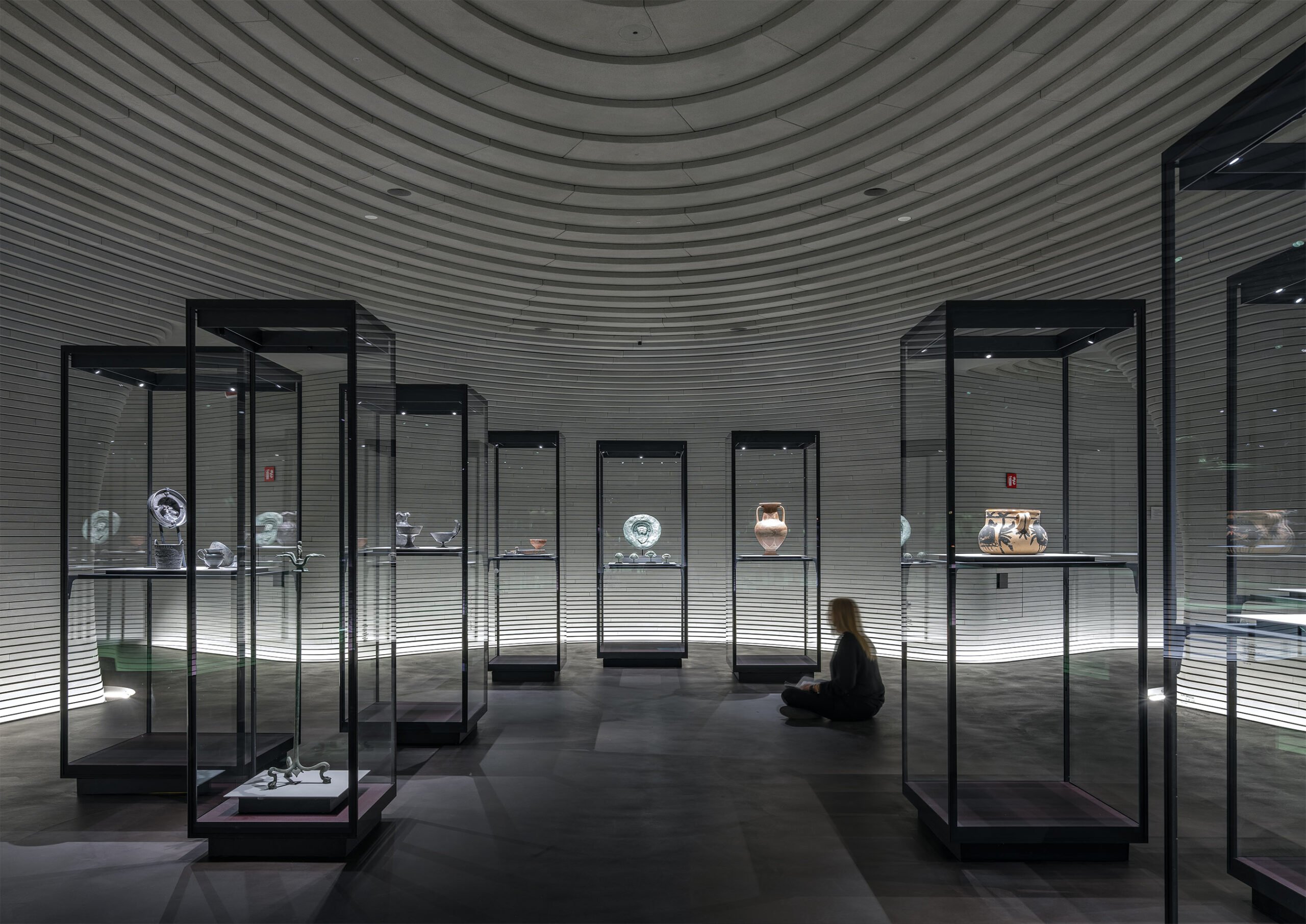
Mario Cucinella Designs a Journey through Time
Throughout this underground level you are enveloped by the look, weight, and feel of the horizontally striated, overlapping pietra serena walls, which evoke geological strata and carve out an environment that feels entirely otherworldly. To enable ventilation, minimize echo, play with shadow, and allow for varied practical functions, the stones, which are flecked with subtly sparkling mica, don’t touch. They’re supported by a metallic spine fitted with metal arms that hold each piece in place, millimeters from the next. Overall, the walls consist of more than 30,000 sections of hand-cut stone, each unique. Mario Cucinella Architects (MCA) created a full-scale prototype in its office to ensure it could pull this off.
While the spaces are inspired by tombs, they feel uplifting, not somber. “It’s a space about life,” says Cucinella. In his mind, the work’s greatest success is the feeling it creates. “Normally archaeological museums are almost like archives. This is one is about journey and emotion. You’re feeling the place around you. It brings your soul very close to the idea of the art of Etruria.”
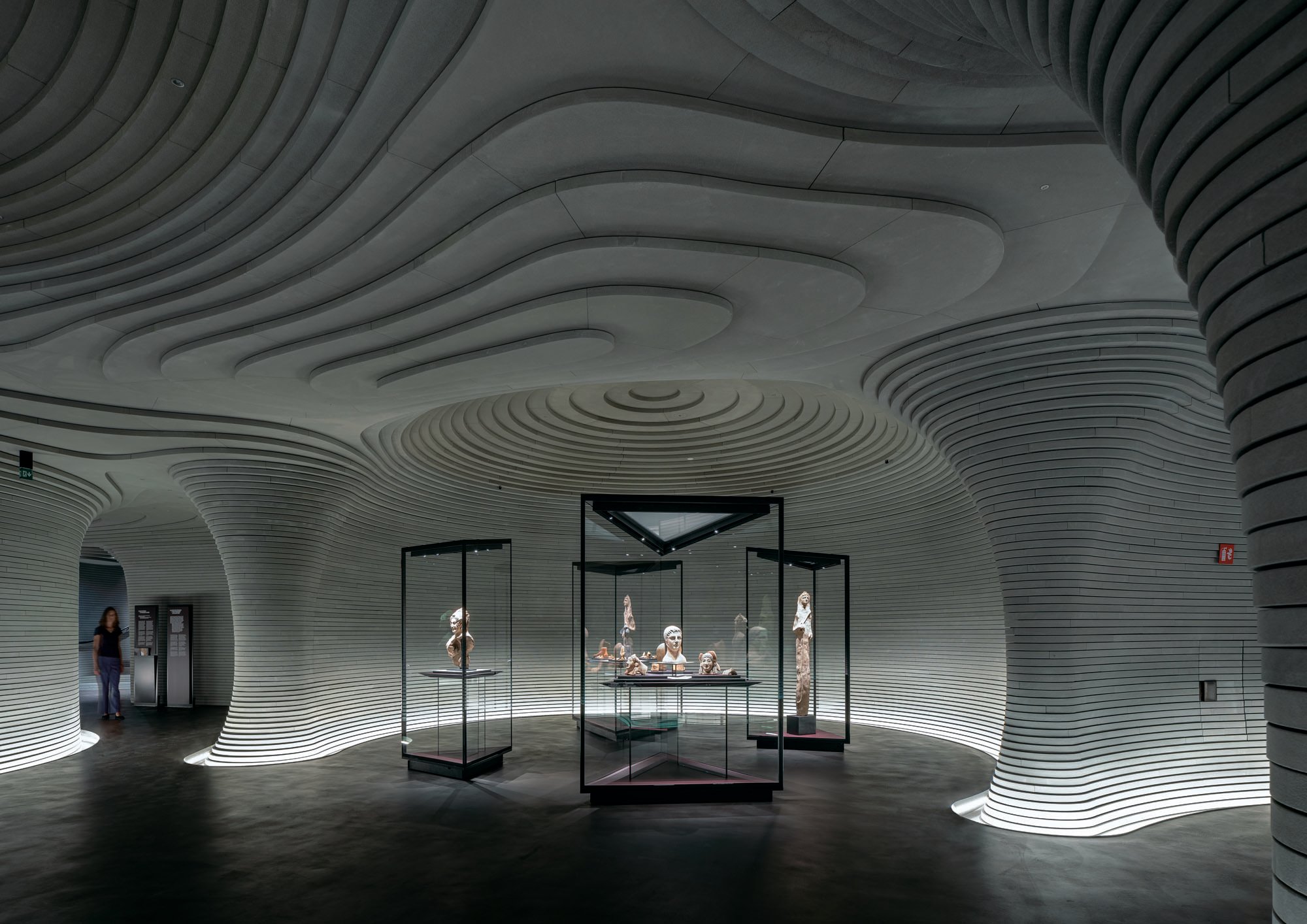
Contemporary Art alongside Ancient Artifacts
From the building’s ground floor upward, MCA’s renovations engage more directly with the Palazzo. The ground floor, which now contains a book shop, ticket office, and café, opens to landscape architect Marilena Baggio’s revived garden—you can see the domes below popping up as earthen mounds—through new, extra-large windows. Levels above, flush with restored patterned wood and terrazzo, brightly painted walls, gilded doors, and marble fireplaces, contain temporary exhibits, and modern and contemporary art from the likes of Ai Wei Wei, Andy Warhol, Giulio Paolini, Paolo Gioli, Augusto Guido Gatti, Luigi Ontani, Giulio Paolini, Francesco Simeti, Marianna Kennedy alongside Etruscan sculptures and artifacts. On the top floor is a restaurant led by Michelin star chef Andrea Aprea.
Cucinella credits the foundation with taking a risk on a design that was in many ways unprecedented. “They didn’t want something ordinary,” says Cucinella. They definitely didn’t get it.
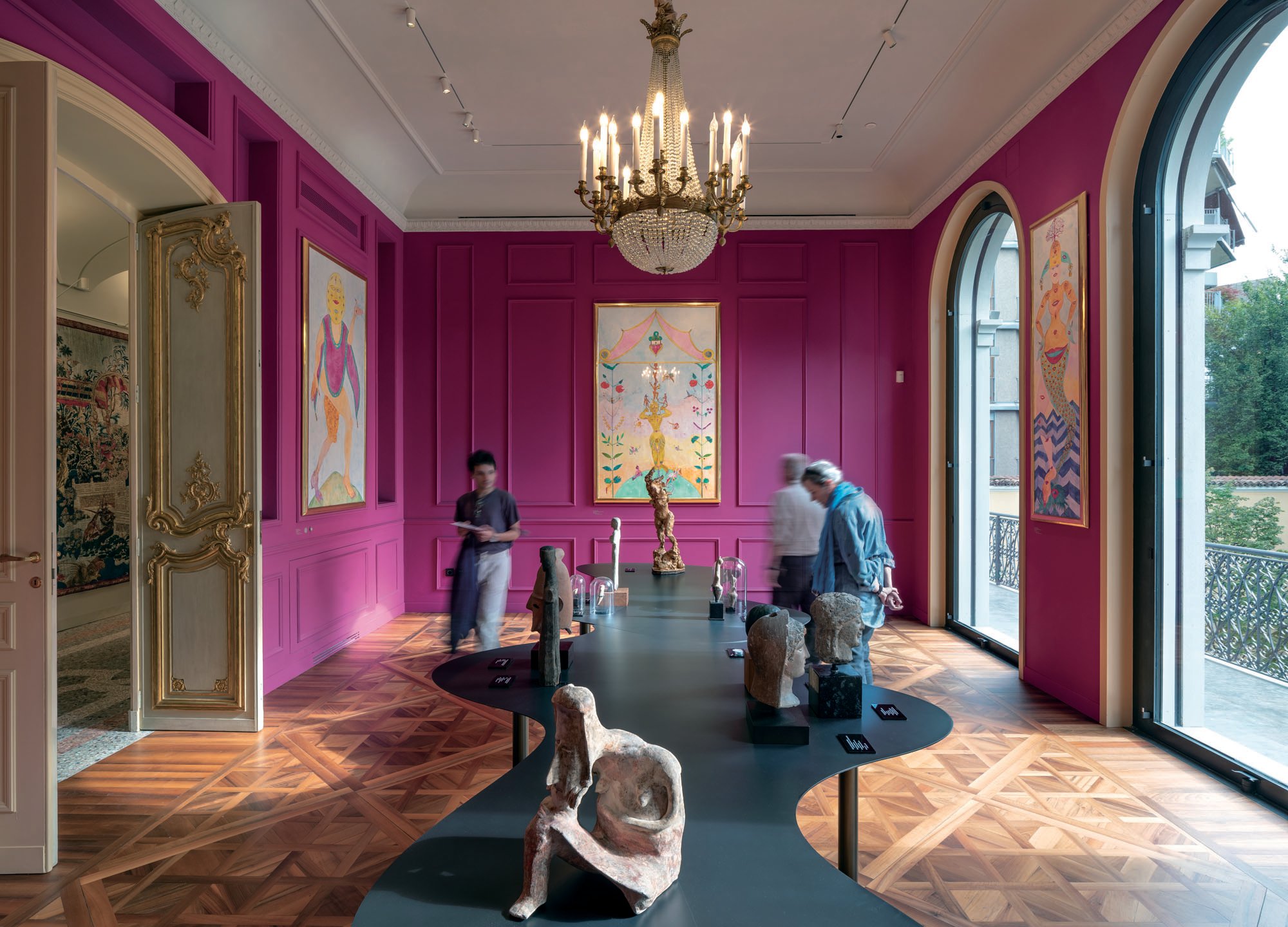
Would you like to comment on this article? Send your thoughts to: [email protected]
Related
Projects
MAD Architects’ FENIX is the World’s First Art Museum Dedicated to Migration
Located in Rotterdam, FENIX is also the Beijing-based firm’s first European museum project.
Projects
Storm King Takes the Parking out of Sculpture Park
Storm King Art Center’s Capital Project has completely transformed its parking, visitor pavilions, and grounds for a more accessible—and less car-centric—outdoor art experience.
Projects
Behind the Curtain: Diller Scofidio + Renfro’s Radical Reimagining of the Museum Archive
At the V&A’s new Storehouse, architecture meets radical transparency. Designed by Diller Scofidio + Renfro, this converted Olympic warehouse reveals the hidden life of museum collections. Visitors explore storage as sp…



